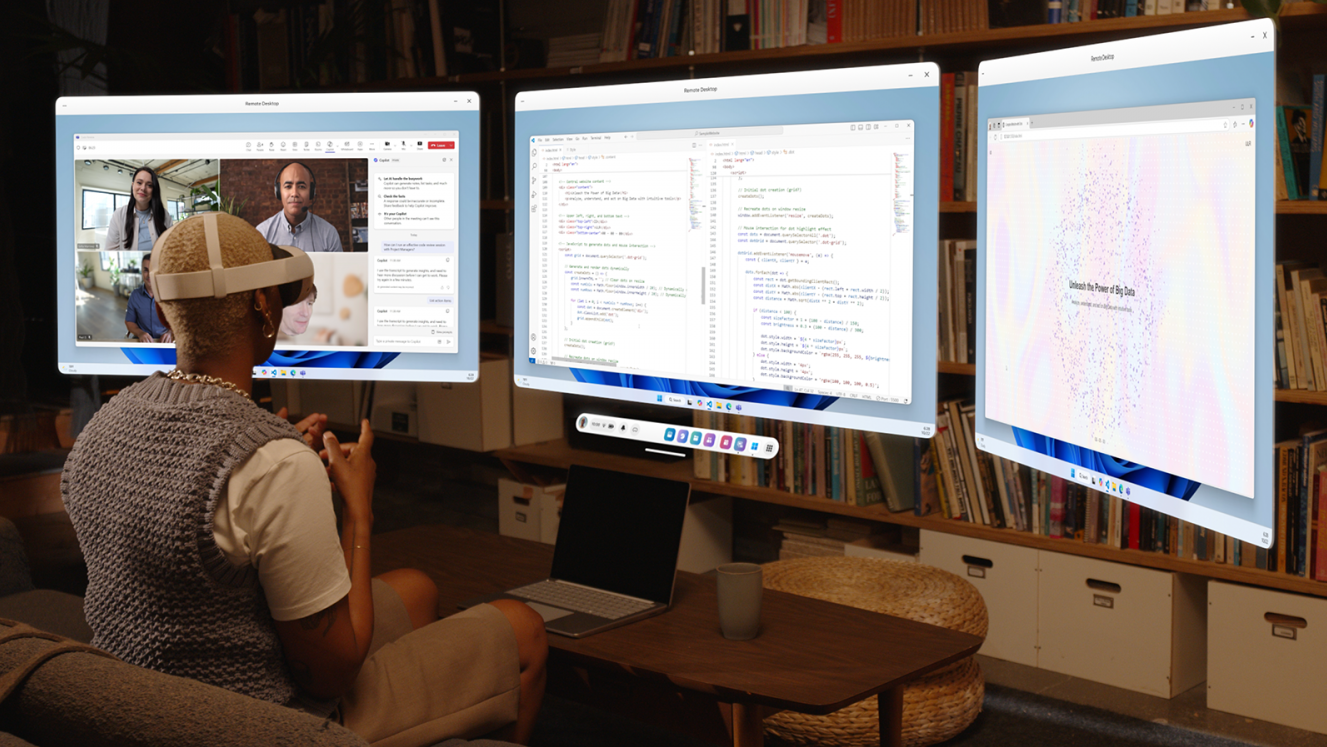
Yesterday, Microsoft announced an unexpected revival of its retired Mixed Reality feature, which was deprecated in every official way apart from for HoloLens back in December of last year. This Mixed Reality revival for Windows 11, though, will be limited to current and upcoming Meta Quest headsets, specifically the Meta Quest 3 and Meta Quest 3S for now. The three features Microsoft flaunts for this integration are "Immersive and private productivity", "Windows 365 Cloud PCs," and "Easy PC connection." The latter is self-explanatory, and the first two relate to the ability to navigate and use Windows 11 via virtual Mixed Reality monitors— the difference being whether you're using your own PC or opt to pay for a Windows 365 Cloud PC that can be used remotely from your headset, instead.
It's nice to see Mixed Reality return in some form, even if it's limited to this so-called "Mixed Reality Link" that only works with Meta Quest 3 and Quest 3S, for whatever reason. Microsoft's insistence on deprecating the full feature while other VR and AR headsets equipped with the requisite cameras still exist seems a bit pre-emptive, but especially questionable now that the company is, in fact, willing to maintain the feature for select hardware manufacturers.
Per the official required specs, users who want to leverage Windows 11 Mixed Reality Link will need to be using a version of Windows 11 newer than or equal to Version 22H2, have an iGPU or discrete GPU stronger than 8th Gen Core Intel UHD 620 (a low requirement, fortunately), have Bluetooth Low Energy enabled, and most importantly at least 5 GHz Wi-Fi, but ideally 6 GHz.
Again, the larger Windows Mixed Reality program was deprecated in December 2023, after about six years of operation. This status for the wider Windows Mixed Reality program is unchanged, and may never change if Microsoft never sees an incentive to extend Mixed Reality Link beyond its partnership with Meta. While it lasted, Windows Mixed Reality certainly had some promise— it just seemingly wasn't drawing customers in and of itself in the same way that other VR hardware offerings were, particularly at the entry-level, dominated by Oculus (now absorbed into Meta), and at the high-end, dominated by HTC and Valve.







